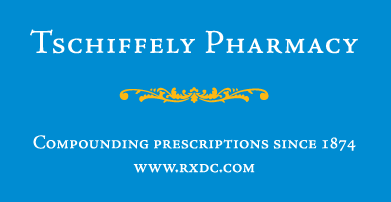
To Buy Propranolol Online Visit Our Pharmacy ↓

Unique Mechanisms of Action: Propranolol Vs. Other Beta-blockers
Propranolol distinguishes itself through its ability to block both beta-1 and beta-2 adrenergic receptors, offering a non-selective approach that can influence heart rate and reduce anxiety. Unlike selective beta-blockers, which primarily target beta-1 receptors, propranolol's broad action provides a versatile treatment avenue. Its mechanism allows usage in varied situations, making it a unique choice amongst its peers.
| Receptor Type | Propranolol | Selective Beta-blockers |
|---|---|---|
| Beta-1 | Blocked | Primarily Blocked |
| Beta-2 | Blocked | Not Blocked |
Moreover, propranolol's effect extends beyond cardiovascular uses, offering advantages in treating anxiety and migraines due to its comprehensive receptor engagement.
Differences in Medical Applications and Therapeutic Uses

Propranolol, a non-selective beta-blocker, differentiates itself with a broader spectrum of influence on both beta-1 and beta-2 adrenergic receptors. This characteristic allows it to be used in unique medical scenarios compared to its selective counterparts like atenolol and metoprolol, which primarily target the heart's beta-1 receptors. Due to its action, propranolol is often chosen for conditions where a wide-ranging effect is desired, such as treating certain forms of tremors and preventing migraine.
In contrast, other beta-blockers are typically employed for more targeted purposes, such as managing cardiac conditions like hypertension and heart failure. These selective blockers minimize side effects related to the lungs, making them advantageous for patients with concurrent respiratory issues.
The versatility of propranolol extends into psychiatric applications, especially in anxiety management, given its ability to dampen physical symptoms of anxiety by blocking peripheral adrenergic activity.
Side Effects: Propranolol Compared to Other Options
Propranolol, a non-selective beta-blocker, often causes fatigue, dizziness, and sleep disturbances, side effects that many patients may encounter. However, its indiscriminate blocking of beta receptors can provide broad therapeutic benefits but may also lead to more pronounced effects, such as cold extremities or vivid dreams. On the other hand, selective beta-blockers like atenolol or metoprolol generally have reduced risks of such central nervous system side effects, as they primarily target the heart rather than other parts of the body, presenting a more focused approach.
Propranolol's Place in Treating Anxiety and Migraines

In the realm of beta-blockers, propranolol stands out for its dual efficacy in addressing both anxiety and migraines. Its unique ability to cross the blood-brain barrier enables it to exert calming effects on the nervous system, making it a popular choice for alleviating performance anxiety and social phobia. Patients often find relief from the racing heart and trembling hands associated with anxiety, improving their confidence in social situations.
Furthermore, propranolol's role in migraine prevention is well-documented. By stabilizing cerebral blood flow and dampening the response to stress hormones, it reduces the frequency and severity of migraine attacks. This makes it a versatile option for individuals suffering from this debilitating condition.
As with any medication, individual responses vary, highlighting the importance of tailored treatment plans. Some may experience profound benefits, while others might require alternative therapies to achieve optimal results.
Dosage Variability Among Beta-blockers: an Insight
Beta-blockers, including propranolol, differ significantly in their dosage requirements, largely due to variations in potency and pharmacokinetics. For instance, propranolol is often initiated at a lower dose and gradually titrated based on patient response and therapeutic goals. This careful adjustment becomes crucial for conditions like hypertension or arrhythmias, where precise dosing can greatly influence outcomes.
| Beta-blocker | Starting Dose | Maximum Dose |
|---|---|---|
| Propranolol | 10-40 mg/day | 320 mg/day |
| Metoprolol | 50-100 mg/day | 400 mg/day |
The variability in dosing is not just a matter of milligrams; it also reflects each drug's absorption rate, half-life, and receptor activity. Propranolol’s non-selective nature can affect dosing strategies differently than more cardio-selective options like metoprolol.
When choosing a beta-blocker, understanding these dosage dynamics helps both clinicians and patients navigate treatment safely and effectively, ensuring optimal management of each unique medical condition.
Patient Experiences: Choosing between Propranolol and Alternatives
Propranolol often stands out among beta-blockers due to its widespread reputation and unique benefits. Patients have reported mixed experiences when choosing between propranolol and other beta-blockers. Many find propranolol effective for managing anxiety and migraines, highlighting its versatility beyond conventional cardiovascular uses. Personal accounts frequently mention how propranolol has helped dampen anxiety symptoms, creating a sense of calm during stressful situations. Alternatively, some individuals prefer other beta-blockers, citing fewer side effects or better control of specific health conditions, like hypertension. Ultimately, the decision often hinges on personal experiences, weighing effectiveness against side effects and individual health requirements.
For more detailed information, you can visit these resources: NCBI, PubMed Central.